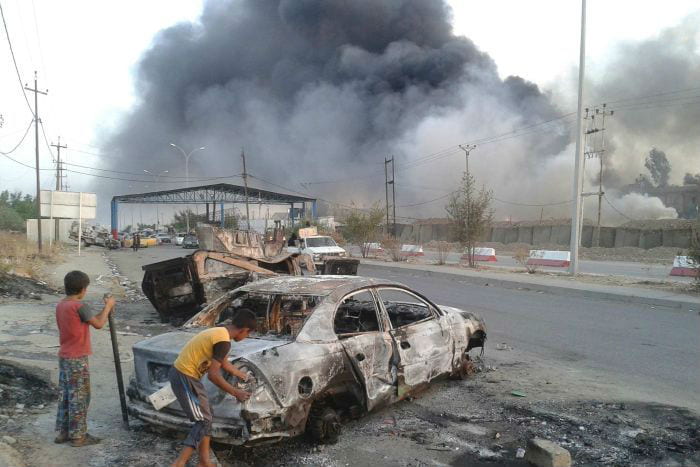BY KATHLEEN MURPHY – STAFF WRITER
As Iraqi civilians in Mosul find themselves trapped on the ground between retreating ISIS forces and American-backed coalition forces seeking to regain the city, U.S. coalition strikes threaten them from above. On March 17, an airstrike, if confirmed by the ongoing investigation, may have resulted in the highest death toll for a single strike since the US’s 2003 invasion of Iraq.
While an American military spokesman, Col. John J. Thomas, has suggested that an ISIS device may have triggered the explosion, an Iraqi major general disagrees. Maj. Gen. Maan al-Saadi claims that his personnel called in the airstrike to eliminate snipers on the roof of the building, not knowing that many civilians were inside. These strikes follow several others in Syria, specifically last week’s strike on a military airport, which the U.S. military claimed it intended to warn the Syrians against further chemical weapons use rather than destroy the airport itself.
The U.S. military has situated such strikes as the start of a larger intensification of U.S. involvement in the conflict, placing increased pressure on ISIS and the Assad regime. However, the March 17 airstrike opens up questions about this strategy as well as the efficacy of the U.S. coalition, and the communication between its members.
The intensification strategy, applied to Mosul specifically, has significant problems, especially as most civilians have remained in the city rather than fleeing. Consequently, when the coalition strikes anywhere in Mosul, they have a higher likelihood of killing these civilians, and the probability heightens with the increasing number of strikes and stress placed on ISIS forces in the region.
Further, the public miscommunication between Iraqi and American coalition forces in statements to the media suggests underlying difficulties in the relationship between militaries, as the U.S. military has noted in internal reports. The Washington Post noted less than two years ago that such reports include the occurrence of miscommunications, deliveries of low-quality equipment with missing parts, insufficient barracks and essential provisions for Iraqi personnel and poorly-kept warehouse inventory–mostly due to the lack of access the Iraqi military provided to US inspectors.
Without these basic functions, the U.S. and its allied militaries have struggled to work with the Iraqis. This will continue to be the case even as state sovereignty norms internationally and political will at home prevent further engagement beyond the logistics and support-focused “By, With, and Through” strategy. Therefore, the prospects of this alliance navigating a complex environment where the opponent is known to take civilians as human shields and use other barbaric methods look grim and painful.
As the US military assessed most Iraqi units as requiring extensive basic training and few as trainable, further nuanced instruction in human rights to deal with a combat environment where opponents mix with the civilian population seems unlikely. Given the state of most of the Iraqi military on the ground, the U.S. military has likely judged such training as putting the cart before the horse. Its priorities, therefore, lie in making Iraqi units functional, even if civilians may lose their lives in the process.
Yet as the March 17 strike reveals, this training oversight may implicate the U.S. The U.S.’s support-focused strategy necessitates significant integration between the small number of U.S. troops and the larger Iraqi forces. Although the Iraqi military failed to follow rules of engagement, not adequately checking the building for civilians, the U.S. responded to their airstrike call anyway. This oversight may cause some to consider the United States, as the coalition’s leader, to be complicit in the mission’s failure.
As the coalition trudges forward in Iraq, such difficulties between the Western coalition and the local forces on the ground will likely continue and possibly cost more civilians their lives. With how the situation stands, the policy-makers in the White House have handed the military a situation that places them between two equally unappealing paths. Concerning the state of the local troops, U.S. forces must decide whether to prioritize higher level training to prevent civilian deaths and other abuses, or to pool resources into defeating ISIS, whose actions also contribute to civilian casualty counts. Regarding the latter, the training of these troops may require further and longer-term U.S. involvement in the conflict, even as state sovereignty norm debates resurface and little public interest or will exists to increase or lengthen U.S. involvement.
With these Catch-22s as well as the resulting complex situations and deficiencies of forces on the ground, an intensification strategy by the Trump administration may very well make a bad situation worse. Attempting to better grasp the ongoing situation may prove less disastrous to civilians and less a waste of U.S. capabilities than an intensification of the current struggling efforts.

